Share this with your friends:
Spider mites are tiny pests that can do significant damage to plants if left uncontrolled. These are common garden pests, but they’re not always easy to get rid of. Observation is the key, so the spider mites on plants can be detected early, and steps can be taken to control them before damage to plants has become too severe.
Effective control methods depend on identifying a spider mite infestation early and being diligent with the selected control method.
What Do Spider Mites Look Like?
Spider mites are genetically related to spiders and ticks. They are reddish-brown or pale green, depending on their stage in life. They are very tiny, eight legged creatures that can be overlooked as dust particles or leaf spots on the plant. Spider mites are sap-sucking pests that will attack indoor or outdoor garden plants. They are most common in climates that have hot, dry summer weather. When the infestation is extensive, the plant will be covered with webbing, which resembles a tangled spider web.
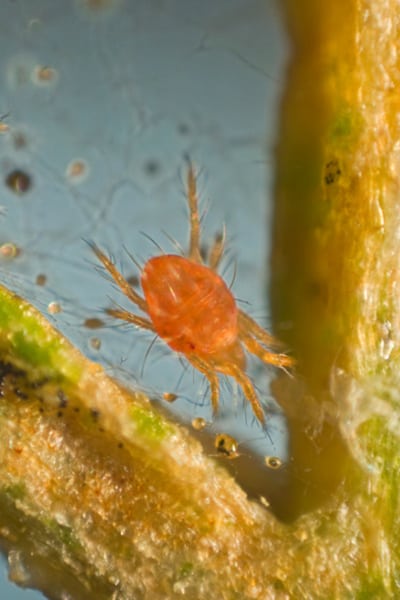
How Do Spider Mites Damage Plants?
Adult Spider Mites Overwinter On Plants
When spider mites overwinter on a plant, widespread damage occurs instantly when the spring arrives and the eggs hatch.
An adult spider mite lays her eggs on the leaves and bark of the selected host plant in the fall of the year. The eggs remains there through the winter months until the weather warms up in early spring. The warm weather causes the eggs to hatch. The tiny 6-legged larvae emerges and begins to feed on the host plant.
In a day or two, the larvae will attach to the underside of the plant leaf so it can molt into its’ first 8-legged adult stage. There will be a total of three molting cycles that will occur within 7-days, and then the spider mite is ready to feast on plants and reproduce.
Spider Mite Spread Through Web
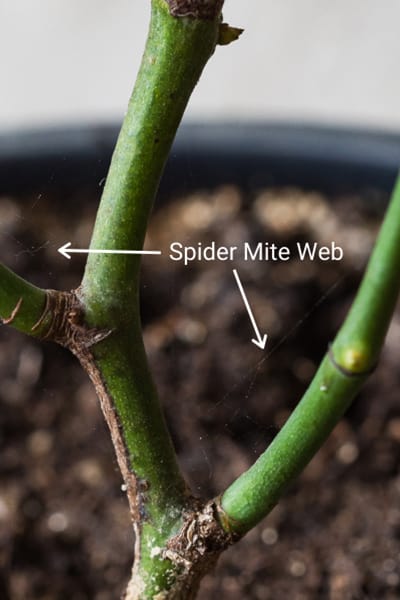
Web surfing is how these tiny plant predators travel from plant to plant. They ride on bits of their webbing when the wind blows. Once they land on a fresh plant, the webbing will stick to it, and they will begin sucking the sap from the new plant.
After an adult female spider mite mates, she will lay 300 eggs each day for the two weeks of her lifespan. One plant does not have enough sap to sustain that number of spider mites, so they have developed an ingenious way to travel. You can see tiny bits of white web blowing between plants on a windy day when an area has a severe infestation of spider mites.
Spider Mite Damage On Plant’s Leaves & Tissues

As the spider mite damage continues, the leaves will begin to curl up from the ends and soon fall off. There will be a tight formation of webbing left behind by the spider mites on the underside of the damaged leaves.
Spider Mite Damage To Vegetable Plants
While spider mite damage can occur on any plant, squash and melons seem to be their favorite garden crops. As the pests suck the sap from the plants and cause the leaves to curl up and drop off, the fruit is exposed to the sunlight. Squash and melons grow best when protected from direct sunlight’s damaging rays by the broad plant leaves. Without those broad leaves saving them, the fruits will be sun-burned.
If you are growing tomato plants, leave enough space between the plants. Overgrown tomato plants are favorite hosts of spider mites. Spider mite infestation can cause yellow leaves on tomato plants.
Small-leafed vegetable plants are not immune to the destruction of spider mites either. Beans and peas are also favorites of these sap-sucking pests, but they go for the produce instead of attacking the plant leaves.
Spider mites will attach themselves right where the stem and pea or bean is attached. This spot is soft and filled with nutrient-rich sap that is supposed to go into developing pea and bean pods but will be swallowed by spider mites if spider mites have infested the plant.
As the nutrient-rich sap is diverted away from the developing pea and bean pods, the pods will not develop properly and become mis-happen, discolored, and usually inedible.
Spider Mite Damage To Flower Plants

Rose bushes are highly susceptible to spider mite damage, and the tender new growth on a rose bush contains the sap spider mites love best. Entire stems can curl up and turn brown from the damage inflicted by spider mites. Once the spider mites are done feeding on the rose bush, they will web surf away, searching for their next meal, which could be in your vegetable garden.
Spider Mite Damage On Greenhouse Plants
Greenhouse plants are also susceptible to spider mite damage, and a typical greenhouse contains a wide variety of plants, including flowers and vegetables. An infestation of these tiny pests usually kills annual flowers before they can be detected.
Spider Mite Damage On Indoor Plants
Since spider mites are protected from their natural predators in indoor environments, house plants are more susceptible to spider mite damage. If you are storing potted plants inside the house during cold weather (like potted curry leaf plant in winter), make sure to check them every couple of weeks to inspect for any signs of spider mite damage.
How To Kill Spider Mites Using Neem Oil?
Neem oil is a natural and organic insecticide that will control spider mites without harming plants or beneficial bugs. Neem oil adheres to the plant leaves and smothers the larvae and adult mites.
Material needed to make the Neem Oil Spray for spider mites:
Steps to get rid of Spider Mites using Neem Oil:
- Rinse off the plant with a strong water jet. Let the plant dry out.
- Prepare the neem oil spray using the Neem Oil Insecticide recipe:
- Mix 0.25 tsp castile soap with 1 quart of warm water in a sprayer.
- Add 1 tsp Organic Neem Oil.
- Vigorously shake the sprayer to mix the ingredients.
- Spray neem oil on the plant with the spider mite damage. Make sure to cover the underside of the leaves as well. There’s where spider mites like to hide.
- Once the spider mites come in contact with the neem oil, the xxx component of neem oil reacts with the spider mite’s digestive and reproduction systems and eventually killing them.
- Repeat the neem oil spray application every 7 days until there is no evidence of spider mites infestation on the plant.
7 Tips to effectively control Spider Mites Using Neem Oil:
- Follow the Neem oil insecticide recipe steps, making sure to mix the Castile soap with water toughly before adding neem oil to the mixture. This step will help the neem oil molecules to bind well with the water molecules.
- Make sure to rinse the plant with Neem oil spray thoroughly. The neem oil component has to come in contact with the spider mite’s external skeleton to kill it. The leaves should be dripping wet after the neem oil application.
- Use a directional sprayer to soak the underside of the leaves with neem oil spray.
- Neem oil droplets do not mix well with water droplets very well. They tend to float on the water surface. While spraying the plant with neem oil, shake the sprayer frequently to mix the liquid in the sprayer.
- Repeat the neem oil application every 7 days. Repeating the neem oil application ensures that the spider mites’ eggs and larva that escaped the first application are killed as well.
- Do not apply neem oil mixture when the temperature is predicted to go above 90F. The leaves covered in neem oil will fry in sunlight and discolor if the weather is too hot.
- Integrate the neem oil treatment with other methods mentioned below to effectively control the spider mites on plants in your garden and the houseplants.
Other ways to prevent and control Spider Mites on plants:
Spider mite population can be controlled with chemical pesticides, but they quickly build up a resistance against those chemicals. Also, the chemicals will kill the beneficial bugs that eat spider mites.
It’s better to integrate natural and organic methods to control spider mites and prevent them from destroying your garden plants.
Rinse the plants:
Spider mites are attracted to dusty leaves on plants, houseplants, and trees. The dusty environment provides the perfect hiding and breeding ground for the spider mites. Rinsing off the plants with water every so often will discourage the spider mite infestation on plants.
Prune:
If you observe the spider mite infestation on a plant, prune off any parts of the plant that shows signs of damage.
Prune off the leaves, stems, flowers, or vegetables past the areas that have webbing. Where there is webbing, there will be spider mites, so be sure to cut off all parts of the plants that contain the fluffy white webbing. If the infestation is heavy but isolated to just one plant, it may be best to get rid of the entire plant and discard it to prevent the spider mites from spreading.
Discard Properly:
Because these garden pests spread so easily, the plant parts or infested plants must be disposed of properly. Do not place the infested clippings on the compost pile. Where there are spider mites, there will be eggs just waiting for the opportune time to hatch.
Place pruned plant parts in a plastic bag or wrap securely in newspaper and put it in the trash. This will help ensure the pests do not travel to any other plants in your landscape, and the infestation can be controlled.
Water Blast:
If you catch a spider mite infestation early, the spider mite colony can be blasted off with water. Aim the water hose nozzle at the infested area and blast them off the plant and onto a hard surface, like a concrete sidewalk. If there is a storm drain nearby, blast the pests’ residue into the storm drain to drown.
Beneficial Bugs:
Not all bugs are created equal, some are good, and some are bad. Spider mites are destructive for the garden plants, but ladybugs and a few others are considered beneficial because they eat the harmful bugs. Lacewings, predatory mites, and ladybugs eat spider mites and are an excellent natural method to prevent and control spider mites on garden plants.
These beneficial bugs can be bought at a garden supply center and should be placed in the garden before an infestation of spider mites becomes overwhelming. The beginning of the garden season is the best time to add beneficial bugs to the vegetable garden.
Rubbing Alcohol:
Another inexpensive way to get rid of Spider mites is to soak a cotton ball in rubbing alcohol and wipe down all infested sections of the plant. Allow the alcohol to remain on the plant for 4-6 hours, then blast with water from the garden hose. Liquid dish soap can be used instead of rubbing alcohol if desired.
DIY Insecticide Spray:
Create a DIY spider mite control that is safe and organic with a little bit a cayenne pepper and water.
1. Mix one teaspoon of cayenne pepper and one cup of water. Pour into a spray bottle.
2. Saturate the plant parts that are infested with spider mites with this mixture.
Another DIY organic spray that will control spider mites is to mixing one table of liquid dish soap and one tablespoon of vegetable oil into a quart of water. Pour into a spray bottle and spray onto vegetable, herb, fruit, or flower plants once a month to keep plants pest-free.
Conclusion:
Spider mites are a nasty little pest that can wreak havoc on garden plants and indoor houseplants. Neem oil is an effective way to control the spider mite damage on plants organically, but following the instructions and incorporating other methods is the definite way to eliminate the spider mites from the plants for good.
Questions? Comments? Want to help?
If you have a question or like to share your thoughts on this article, please leave a comment below. I will respond as soon as I can.
Join Pinch of Seeds Group on Facebook
If you find this information helpful, don’t keep it to yourself! Share the link to this article on your Facebook page or gardening group. Your fellow gardeners will thank you for it!
Pin this post for a visual reminder
Would you like to refer to this article frequently? Just pin this image to one of your Pinterest gardening boards so that you can easily find it later when you need it.
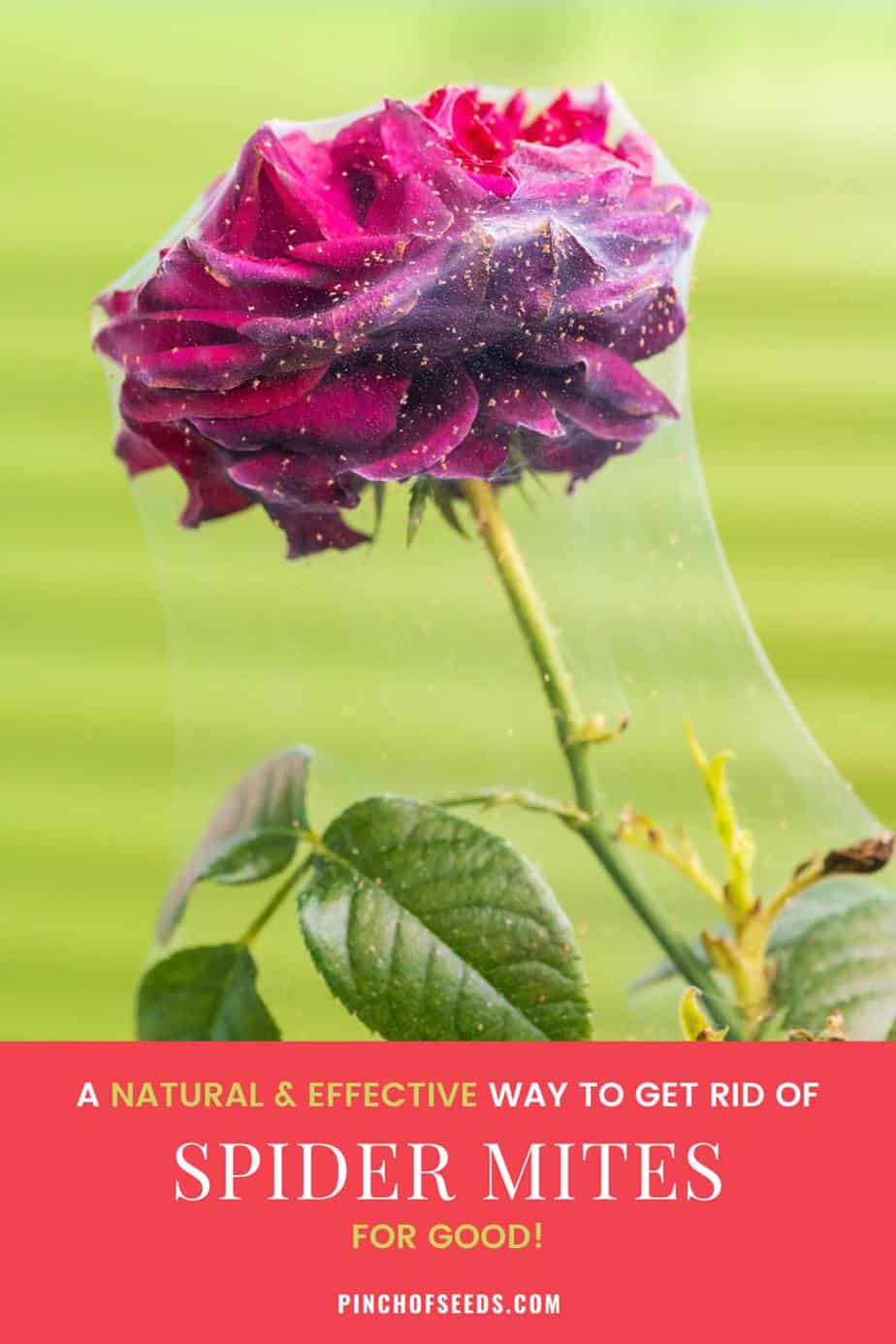
Share this with your friends:

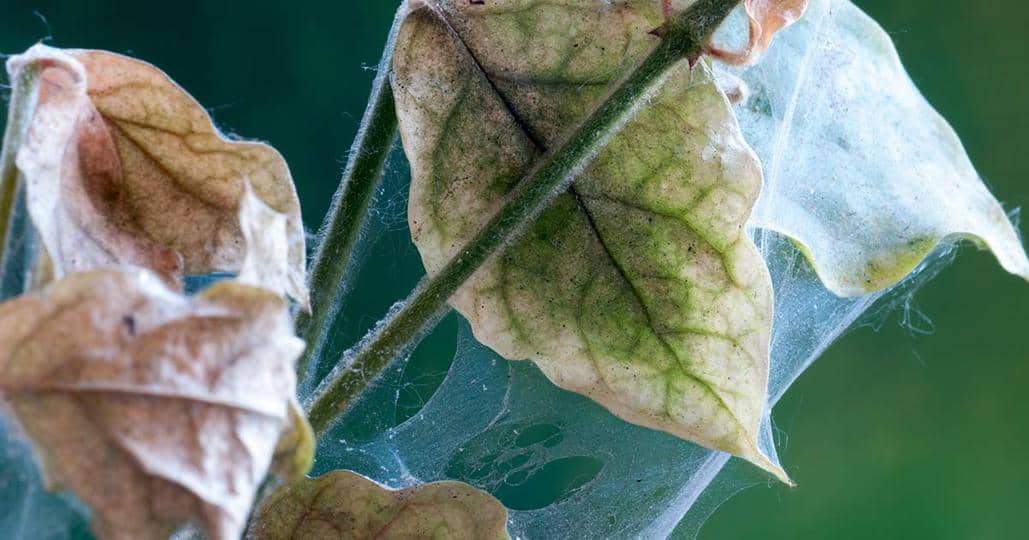
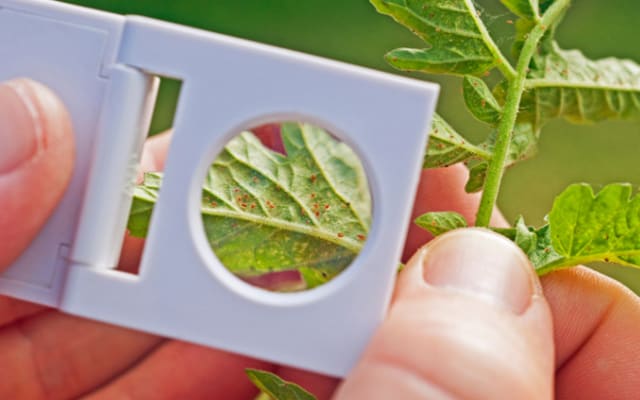
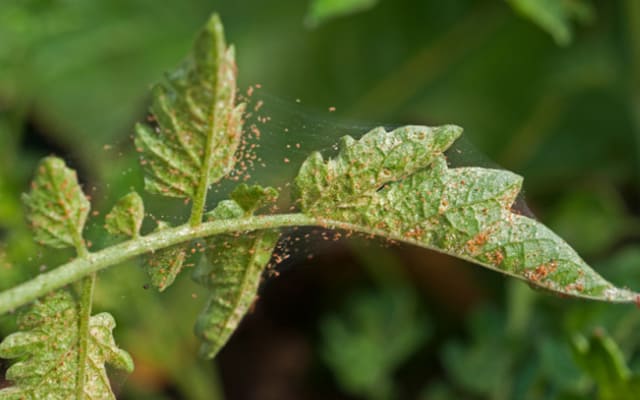
Thanks for sharing this article, it helps a lot.
Peppers from seed to harvest is the best.